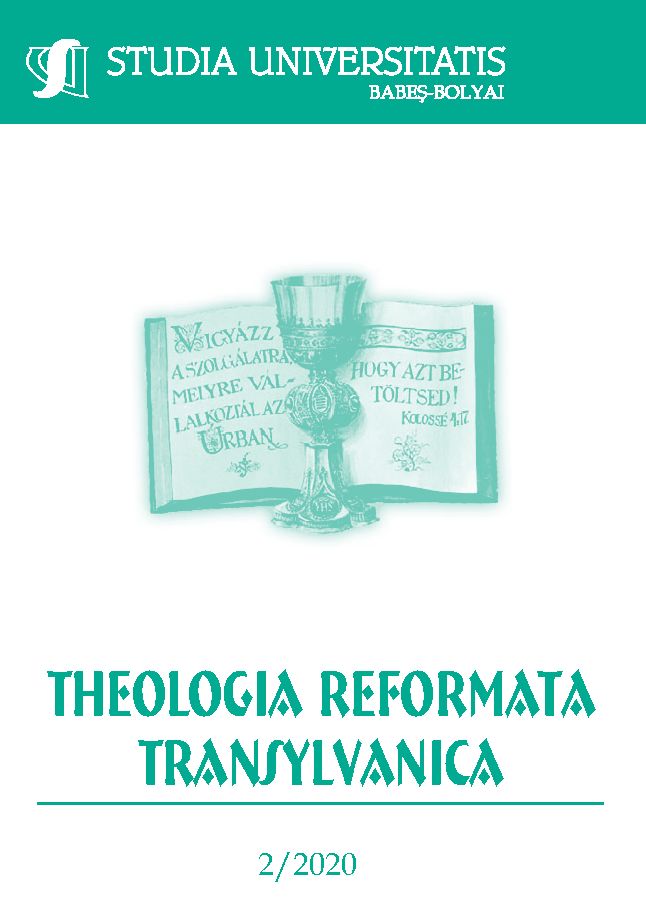Ethnicity, Confession, Nation – The Development of Concepts in the History of Transylvania in Religious Life
DOI:
https://doi.org/10.24193/subbtref.65.2.08Keywords:
ethnicity, people, confession, dynamic status, national consciousness, Transylvania, the church.Abstract
The church has had to accept the national division of Europe since the Middle Ages and adapt to this situation. This issue is relatively unclear in the case of Transylvania. N. Iorga stated about the Orthodox Christian conscious-ness that “it was so strong that it hindered the creation of a strong national consciousness”, and this would allow us to see in the ecclesiastical organization a form of expression of unitary organization of Romanian ethnicity in Transylvania. The time of Transylvanian principalities and voivodeships shows us that most often the ecclesiastical leaders were also the political leaders (see the case of Prince Andrew Báthory who was Archbishop of Warmia – Poland); so, the two concepts of ethnicity and confession reflected the same historical reality during those times. The two concepts will become separated only later, after the emergence of confessions other than the Eastern rite. In support of our statement, we have the correspondence between the Hungarian kings and officials and the papacy. Before dealing with these perspectives, we shall pin down the terminology to grant the reader the possibility to understand the historical situations through a kind of thinking marked by the imprint of the Holy Scripture.References
BEJAN, A. (1995): Banatul în secolele IV–XII. Timișoara.
BOCȘAN, N. – LUMPERDEAN, I. – POP, I.-A. (1994): Etnie și confesiune în Transilvania (secolele XIII–XIX). Oradea.
BOCȘAN, Nicolae – POP, Ioan Aurel (1994): Etnie și confesiune în Transilvania (sec XIII–XIX). Oradea.
CHIRILĂ, Ioan (1999): Etnie şi confesiune, evoluția termenilor în cadrul istoric transilvănean în secolele XIII-XIX. In: Leb, Ioan Vasile (ed.): Teologie şi cultură transilvană în contextul spiritualității europene în sec. XVI–XIX. Cluj-Napoca. 23–37. (2018): Etică/morală, etnie şi confesiune. Relevanțe biblice. In: Iloaie, Ștefan (ed.): Ethos şi etnos: aspecte teologice şi sociale ale mărturiei creștine. Cluj-Napoca. 9–21.
CRĂCIUN, I. (1938): Dietele Transilvaniei ținute sub domnia lui Mihai Viteazul (1599–1600). In: Anuarul Institutului de Istorie Națională Cluj 7 (1936–1938). 620–640.
DECEI, A. (1940): Contribution â l’étude de la situation politique de Roumains de Transylvanie au III-e et au XIX-e siècle. In: Revue de Transylvanie 6. 1–2.
DRAGAN, I. (1986): Românii din Transilvania în lupta antiotomană din a doua jumătate a veacului al XV-lea. In: Anuarul Institutului de Istorie și Arheologie din Cluj 17 (1985–1986).
GANOCZI, I. (1755): Disertatio historica – critica de Sancto Ladislao Hungaricae rege fondatore Episcopatus Varadiensisa. Vienna.
HURMUZAKI, Eudoxiu – DENSUȘIANU, Nicolae (1887): Documente privitoare la istoria românilor, vol. 1, part 1. Bucharest.
IORGA, Nicolae (1915): Istoria românilor din Ardeal și Ungaria, vol. 1. Bucharest. (1956): Conferinţe, ideea unităţii româneşti. Bucharest.
LUPAȘ, Ioan (1924): A existat în Transilvania o episcopie ortodoxă înainte de întemeierea regatului ungar? In: Biserica Ortodoxă Română 52, 5. 149–153.
LUPŞA, Ştefan (1929): Catolicismul şi românii clin Ardeal şi Ungaria până la anul 1556. Cernăuţi.
MANNS, Frederic (1996): L’Israel de Dieu. Jerusalem.
PĂCURARIU, Mircea (1978): Istoria Bisericii Ortodoxe Române. Sibiu. (1980): Începuturile Mitropoliei Transilvaniei. Bucharest.
PALI, Fr. (1993): Romanians in Transylvania in the Middle Ages. Cluj-Napoca.
PAPACOSTEA, S. (1988): Geneza statului în evul mediu românesc. Studii critice. Bucharest.
PASCU, Ştefan (1956): Mişcările ţărăneşti prilejuite de intrarea lui Mihai Viteazul în Transilvania. In: Studii şi materiale de istorie medie 1/1956. 123–154.
POP, Ioan Aurel (1987): Confesiune și națiune medievală: solidarități românești în secolele XIV–XVI. In: Anuarul Institutului de Istorie “George Bariţiu” din Cluj-Napoca. Seria Historia 1987–1988 XXVIII. 177–187. (1988): Solidarități medieval româneşti pe bază social economică (sec. XIV–XVI). In: Istorie și civilizație. Iași. (1993): Ethnic and Confessional Sensibilities in Transylvania during the Time of Nicolaus Olahus. In: Transylvanian Review 3. 95–96. (2011): Din mâinile valahilor schismatici. Românii și puterea în Regatul Ungariei medievale (secolele XIII–XIV). Bucharest.
POPA, R. (1970): Ţara Maramureşului în veacul XIV. Bucharest.
PRODAN, D. (1984): Supplex Libellus Valachorum. Din istoria formării națiunii române. Bucharest.
RUSU, A. A. (1983): Un formular al cancelariei regale, din epoca lui Iancu de Hunedoara, pentru nobilii români din Transilvania. In: Acta Musei Napocensis 20. 155–171.
STOICESCU, N. (1983): Unitatea românilor în evul mediu. Bucharest.
SUCIU, I. D. (1977): Monografia Mitropoliei Banatului. Timișoara.
SZILAGYI, Sándor (1866): Erdélyország története tekintettel mivelődésére, vol. 1. Pest.
TEODOR, P. (1993): Politica ecleziastică a lui Mihai Viteazul în Transilvania. In: Revista istorică 6. 5–7.
TURCUȘ, Șerban (2001a): Sinodul general de la Buda. Cluj-Napoca. (2001b): Sfântul Scaun și românii în secolul al XIII-lea. Bucharest.
Downloads
Published
How to Cite
Issue
Section
License
Copyright (c) 2020 Studia Universitatis Babeș-Bolyai Theologia Reformata Transylvanica

This work is licensed under a Creative Commons Attribution-NonCommercial-NoDerivatives 4.0 International License.






